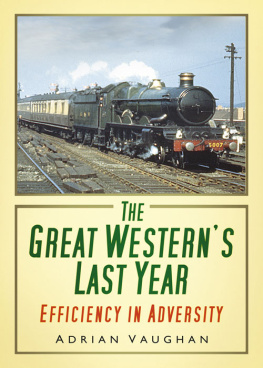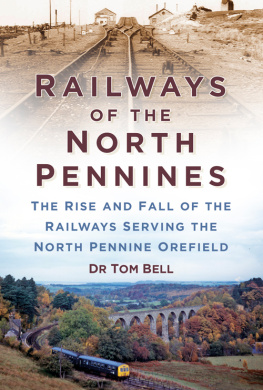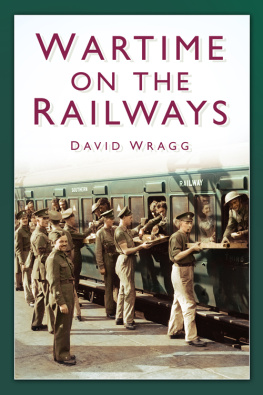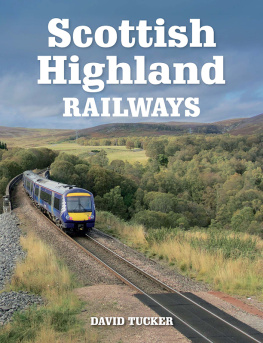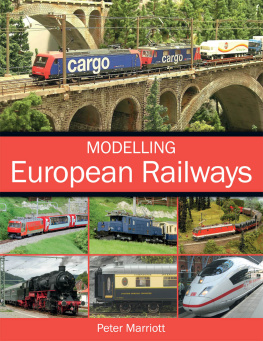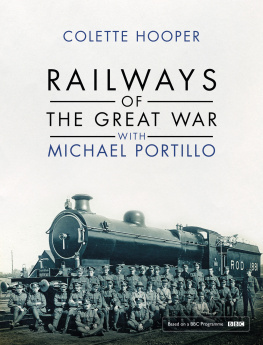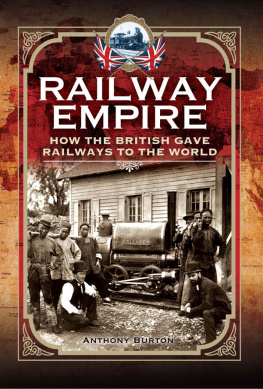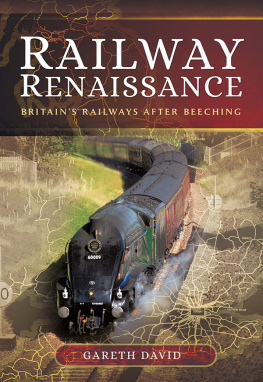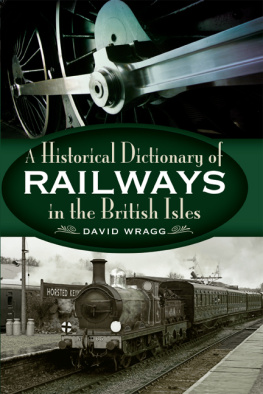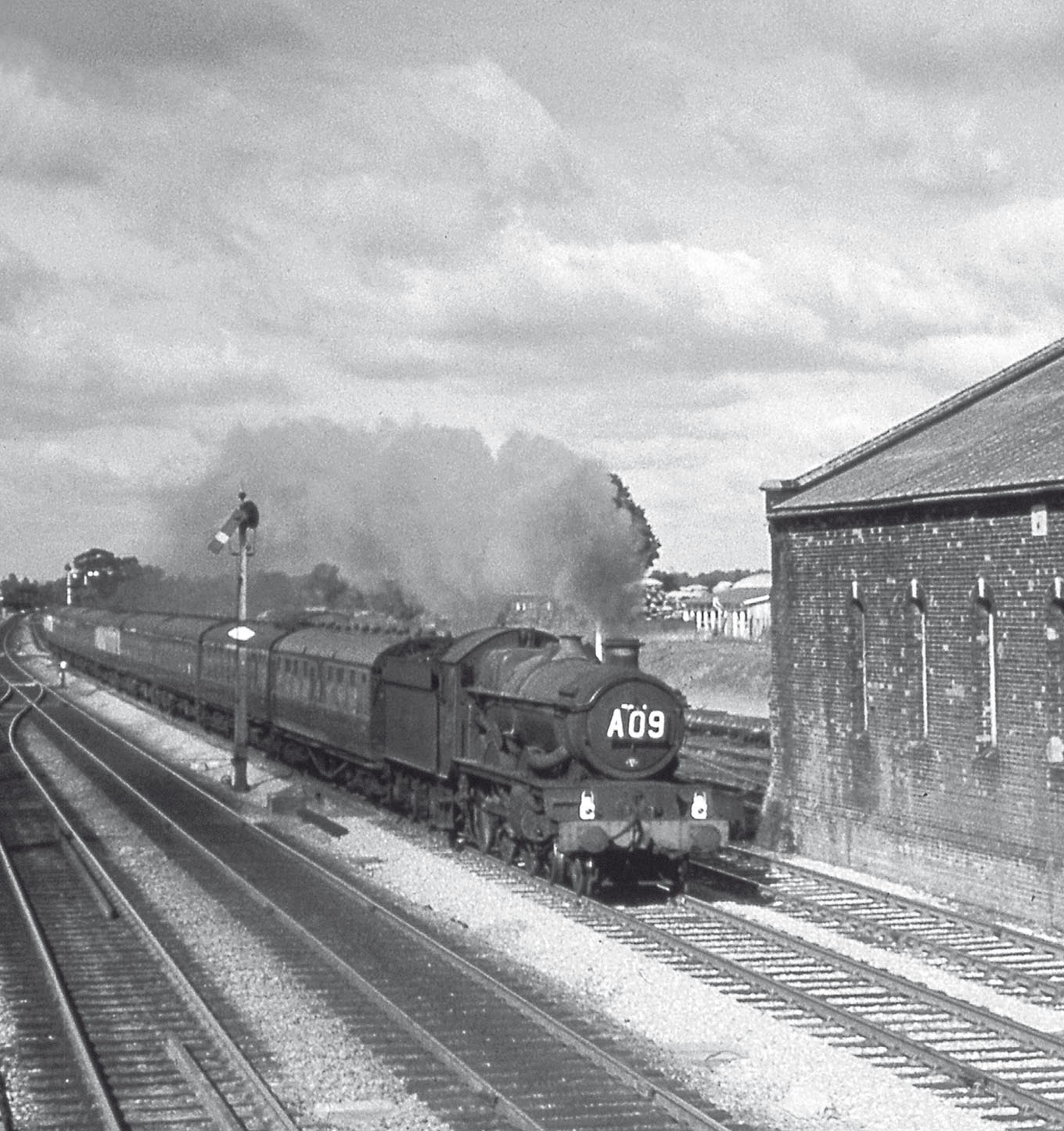
RAILWAYS THROUGH THE VALE OF THE WHITE HORSE
Adrian Vaughan

THE CROWOOD PRESS
First published in 2015 by
The Crowood Press Ltd
Ramsbury, Marlborough
Wiltshire SN8 2HR
www.crowood.com
This e-book first published in 2015
Adrian Vaughan 2015
All rights reserved. No part of this publication may be reproduced or transmitted in any form or by any means, electronic or mechanical, including photocopy, recording, or any information storage and retrieval system, without permission in writing from the publishers.
British Library Cataloguing-in-Publication Data
A catalogue record for this book is available from the British Library.
ISBN 978 1 84797 872 1
Illustrations are from the authors collection
except where otherwise stated.
Frontispiece: The 8 a.m. Cheltenham speeds through the Vale on its non-stop run from Kemble to Paddington. Seen here from Challow signal box in 1962. AUTHOR
Contents
Acknowledgements
I must thank the following kind friends for their assistance:
Jim Brown for his courtesy in allowing me to quote at length from his book on Challow station, Jim Brown Remembers his Wartime Boyhood in the Vale of the White Horse. |
Don Lovelock for his courtesy in providing so many of his photos. |
Austin Attwell and Sandra Cox of Pendon Museum for their kind cooperation in making available to me the Pendon Museum photographic collection. The magnificent Pendon Museum of the Vale of the White Horse at Long Wittenham is a must-visit place for anyone interested in the Vale. |
Michael H.C. Baker. |
Mark Howells, Engineer, Network Rail. |
David Collins, Chris Hall, Alan Pym and Danny Scroggins, all experts on GWR and Western Region signalling. |
Elaine Arthurs, Curator of STEAM, Museum of the GWR at Swindon, for her prompt help on the image of Exeter Street, Swindon. |
R.A. Cooke for his painstaking research published in his Track Layout Diagrams of the Great Western Railway and BR Western Region, Sections 20 and 23. I credit information from this source as R.A. Cooke, Section 20 or 23 with the page number. |
The signal box diagrams were drawn by Signalling Record Society (SRS) experts using official GWR/ WR information painstakingly gathered over many years and combined into the SRSs Signal Box Register, volume 1. The diagrams and the register of signal boxes are obtainable from the Society see the SRS website, www.s-r-s.org.uk
All references beginning Rail, MT and MFQ are to be found at the National Archives, Kew.
A note on measurements
Distances are given in miles and chains, in accordance with the usage of the time. There are eighty chains to a mile, so 1 chain = 22yd.
Introduction
To quote from Miss Eleanor Haydens 1928 book Islands of the Vale, the land of the Vale of the White Horse slopes from the setting sun to the dawn. It was thus perfectly situated to carry Brunels railway out of the Thames Valley and up to the summit of the route before dropping away into the valley of the Avon.
The 24 miles through the Vale cannot be described as an exciting piece of railway compared with, say, Oxenholme to Shap, or Settle Junction to Ais Gill, but it was, after Reading, where I grew up with what had been the Great Western Railway. That coal-fired, mechanical railway was a handsome thing in itself. Its stations and its signal boxes fitted perfectly into the beautiful landscape, tall with elm trees, dotted with farms, cattle, woodlands, and parallel with the long green line of the Berkshire Downs away to the south that splendid skyline where not a single hawthorn or shrub blotched the green velvet but brushy beech plantations clung to slopes and crowned the ridge, complementing the bold line of the hills.
All was handsome, well made, perfectly proportioned in the landscape and the railway that ran through it. A train journey through the Vale was as if through a well-kept garden. The tracks and the side banks were perfectly, neatly, cleanly kept by hobnailed sons of Berkshire toil, weather-beaten and true. No weeds, no scruffy shrubs, no brambles, because they burned off the dead grass from winter each spring.
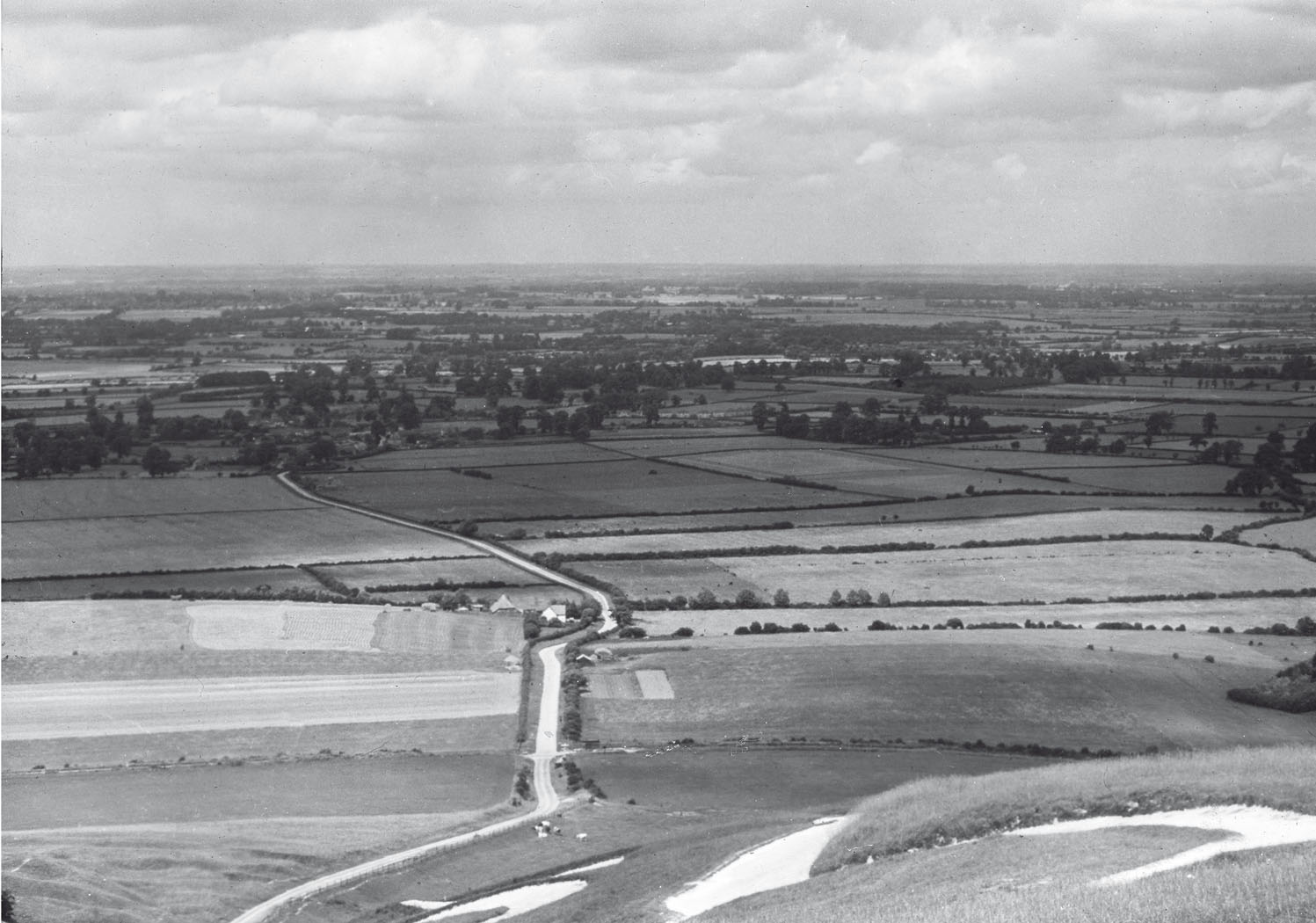
The Vale of the White Horse in 1939. H.O. VAUGHAN
On the south side, just by the fence, were the tall poles of the telegraph system. The poles, with their many crossbars carrying dozens of wires, gave the dignity of height to the route. Sitting on the grass at the lineside one heard the wind singing in the wires, wistful and haunting. From the train the festoons of wire looped briskly up and down as the train sped past them, a perfect accompaniment to the rhythm of the wheels. Through the window, between drifts of the locomotives exhaust, one saw the wide grasslands. In winter, one might have seen the Old Berks Hunt streaming colourfully across the fields. You would see a lonely homestead here and there, clefts of the steep hillside leading to the ridge and, clearing the cutting at Uffington, the crowning glory of the Downs White Horse Hill.
This was where I grew up and learned how to be a railwayman while still at school. It was a timeless place: the railwaymen joined as school leavers and spent fifty years in the job. Nothing much changed, not even the timetable at least, it changed only a little. Some trains, like the 5.30am Paddington to Penzance had run through the Vale in Brunels time. But in 1965 the white-hot cutting edge of technology started to cut jobs, cut roots. Sometime soon, we are promised, the picturesque delights of the overhead catenary for electric trains will grace the Vale. The price of progress is high.
I have collected here some history and some photographs to commemorate a gentler time. I hope you will enjoy the result.
Adrian Vaughan
Barney, North Norfolk
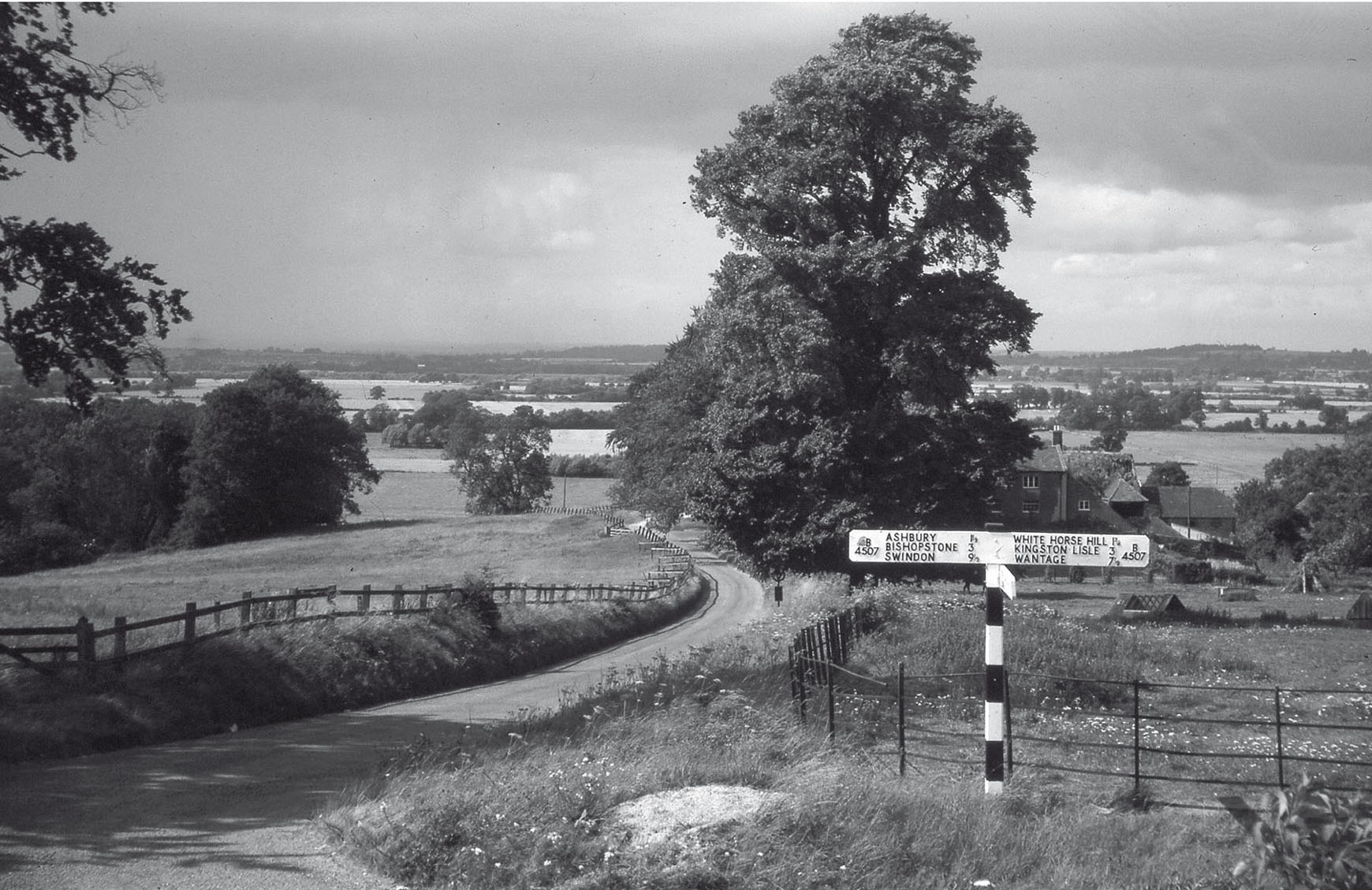
Signpost over the Vale in 1965. H.O. VAUGHAN
CHAPTER 1
The Route through the Vale
The railway through the Vale of the White Horse is part of the route chosen by Isambard Kingdom Brunel. On 7 March 1833 he was appointed the Surveyor of not one route for a railway from Bristol to London but as many [routes] as might appear to offer any advantage peculiar to themselves. In his diary that evening and until 26 August, he referred to this work as the Bristol Railway. The glorious title of Great Western Railway was used for the first time, as far as can be known, at the top of page 1 of the London Committee of Managements minutes dated 27 August 1833. Brunel was not shown in those minutes as being present but that evening, when he recorded in his diary that he had been appointed Engineer of the line, he also wrote the title for the time.
Railways to connect the two greatest cities in Britain had been proposed in 1824, but these were the work of ordinary men, going by unimaginative ways, winding and hilly. Brunel was unique among the railway engineers in that he was an artist, a dramatist; he loved the exquisite. His biographer, L.T.C. Rolt, wrote that Brunel said The railway I shall build will not be the cheapest but it will be the best. No one living today, including the long-serving archivist of the Brunel Papers at Bristol, Nick Lee, has been able to find the paper on which Brunel wrote that, but, looking at the results of Brunels labours, one can see that he intended his railway to be a work of art.


